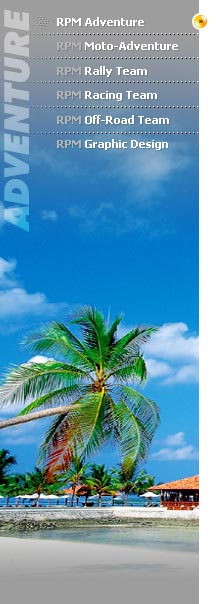
 |
Europe Encompassed 2010
 34 days Adventures
from $ 3210* no AIR 34 days Adventures
from $ 3210* no AIR |
Air Travel
Board your transatlantic flight from USA.
Days 1-2 Paris
Our group will arrive from all
over the world today, and we ask that you be in the hotel by 18:00,
as our first group meeting takes place at that time. Check out the
Intrepid notice for details of this important meeting. There are no
planned activities for this first day, and with so much to see and
do in Paris, we suggest you get out there and start seeing it! It
would be best to arrive a few days early if possible and do as much
sightseeing in Paris before the trip starts. There really is that
much to see and do. The sights of Paris are iconic and you have more
options than time. Go to the Louvre Museum to see the Mona Lisa and
the Venus de Mile, or the Musee d'Orsay- now home to some of the
most famous Impressionist paintings- you do not need to be an art
aficionado to appreciate this museum. The Eiffel tower can whisk you
to some glorious views of the city for alternative view take a
picnic al fresco on the steps of the Sacre Coeur. Gaze at the Notre
Dame Cathedral with its vast rose windows and menacing gargoyles,
visit the home of the Phantom of the Opera, or shop at Les Halles
and along the Rue de Rivoli. A walk on the Champs Elysees
culminating in the Arc de Triomphe is an omissible sight. There is
so much to do so don't waste a minute! Your leader will collect part
of your local payment (EUR200 cash per person) today. Please bring
Euro notes/bills in large denominations. The remainder will be
collected on day 15.
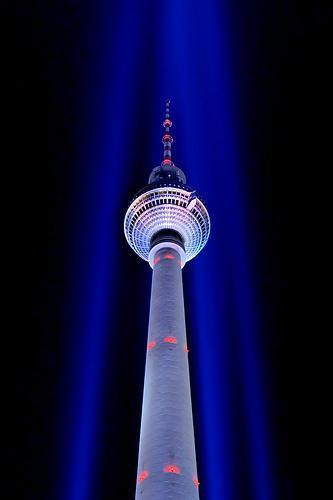
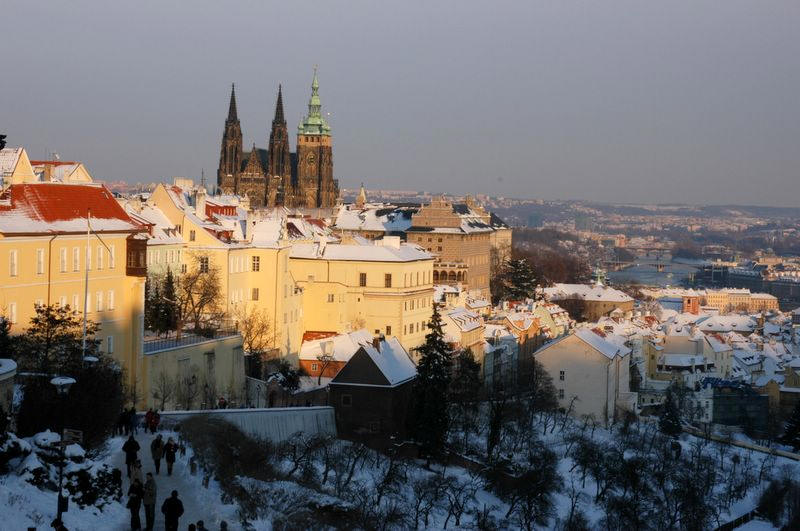
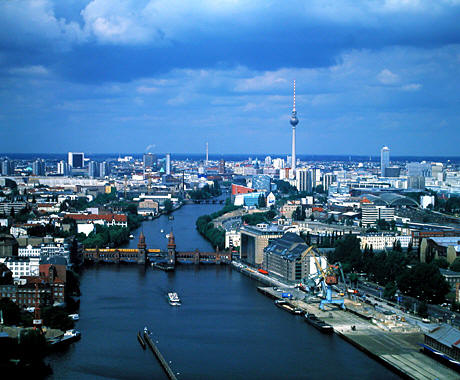
Days 3-4 Bruges
After a bus and train ride (approx. 6 hours) we cross to Flanders
and to the small medieval trading town of Bruges, a gourmet's
delight full of fine restaurants, delicious chocolates, waffles and
the world's greatest variety of beers. Bruges (or Brugge) is one of
the most beautiful medieval cities in Europe and is known as "the
Venice of the North" with the picturesque canals, cobbled lanes and
Renaissance style architecture that have made it a travellers'
favourite. Walk or cycle the narrow cobbled streets and squares of
this world heritage city, shop for famous Belgian lace and yummy
chocolates, marvel at the Flemish masters at the Groeninge Museum,
opt for a cruise along the Lake of Love or take a bike ride along
the city canals or rural riverside on one of many trails. Other
optional activities include the beer museum or the chocolate museum,
climb the giant Belfry or take a day trip to Waterloo, Ghent or
Antwerp. You have plenty of free time to explore this charming city
and its surroundings on foot or bike. For an alternative approach,
why not choose a De Halve Maan brewery tour to learn about the beer
for which Belgium is famous or cap your days off in one of the many
bars such as the renowned 't Brugs Beertje which has over 250 beers
available. The food market in the Old Market Square is a highlight.
It sells fresh local produce like fruits and vegetables, but most
importantly different Belgian cheeses and meats, hot chicken and
local specialties.
Days 5-6 Amsterdam
From Belgium the Netherlands beckon, and we travel by train to
Amsterdam (approx. 3.5 hours), a Calvinist city famous for its
hedonistic delights and its wealth of culture. Amsterdam boasts fine
art, Heineken, canals, crooked buildings and plenty more to amuse
you. You can cruise the historic canals, and enjoy the street
musicians at the sidewalk cafes on Rembrandtsplein. This afternoon
why not head out to Zaanse Schans (approx. 1 hour), a small village
on a canal complete with working windmills, cheese factories and
workshops making clogs. Day 6 is a full free day for you to do as
you please and there is a lot going on in Amsterdam. It boasts some
of the finest museums in the world. During your free time, check out
the Dutch Masters such as Rembrandt and Vermeer at the Rijksmuseum
or the works of that unfortunate Impressionist at The Van Gogh
Museum. Another option you might like to consider in your free time
is a visit to the former hiding place, where Anne Frank wrote her
famous diary, which is now a well-known museum, the Anne Frankhuis.
A visit to the museum tells the history of the eight people in
hiding and those who helped them during the war. Anne Frank's diary
is among the original objects on display. There are many fascinating
districts to explore in Amsterdam, and the best way to get around is
on a bicycle, just as most of the locals do. As an option you can
hire a bike for the day and chain your wheels to anything stationary
while you hop off and visit the sights. In the interests of optimum
health and safety for all group members, Intrepid does not support
the use or possession of any illegal drugs, hashish or marijuana
whilst traveling on an Intrepid Travel trip.
 Days 7-9 Berlin Days 7-9 Berlin
Early on day 7, we travel to Berlin by train (approx. 7 hours).
Berlin includes parks like the Tiergarten, monumental buildings
ranging from glorious Prussian statements like the Reichstag (the
parliament building) to art-house indulgences like the House of
World Cultures, war memorials both old (the Prussian Victory Column)
and more recent (the Soviet War Memorial). Not only does Berlin have
heaps of things to see and do already, the majority of it is being
rebuilt even as you read this, slowly restoring the grandeur Berlin
was once known for. Of course its more recent history still holds a
fascination for many, and vestiges of the Wall, Checkpoint Charlie,
and even memories of another era, the well thought out Gestapo
museum can be visited during your time here. For lovers of
antiquities the Pergamon Museum is a real highlight. With three
opera houses, over 150 theatres and over 170 museums there is enough
culture to keep you busy during your 2 full days here.
Day 10 Warsaw
Another long traveling day (approx. 6 hours) sees us in Warsaw in
the early afternoon. Warsaw is a large, bustling capital on the
River Wisla and it is remarkable to see the results of the Polish
people's efforts to rebuild their city from what was mere rubble at
the end of World War II. After the Warsaw uprising in 1944, the
Nazis set out to level the city as punishment and virtually
succeeded with 85% of the buildings destroyed and most of the
population driven out, but as soon as the last shells dropped on the
city, restoration began. Warsaw is one of Europe's most underrated
cities with a lot to do and see. Starting on the left bank is the
centre of national pride, the Royal Palace, where you can witness
firsthand how much work has been done to painstakingly recreate
Warsaw into what you see today. It is difficult to believe that
parts of Warsaw's Old Town only date from the 1970Õs. Ironically,
many of the Old Town buildings are closer to their original
architecture than they were before they were destroyed. The
successful rebuilding of the Old Town was rewarded by earning a
place on the UNESCO World Heritage List in 1980. Pass the trendy
shops of Nowy Swiat, the royal gardens of Lazienki Park and the
palaces that survived the war or Wilanow Palace to the south of the
city centre.There are several lovely parks such as the ones on the
right bank in fashionable Praga district, and many monuments like
the Little Upriser and Warsaw's Mermaid, Jewish sites, museums
dedicated to famous Poles like Marie Curie and Frederic Chopin, and
plenty of other attractions to fill the afternoon.
Days 11-13 Krakow
We travel by train (approx. 3 hours) to Krakow which is possibly the
best known of all of Poland's cities and was once its capital. A
former residence of 11th-17th century Polish Kings, it is now a
World Heritage listed site. Highlights include the Wawel Castle, a
royal residence atop the hill just outside the old town is a
magnificent testament to past glory while the square is one of
Europe's most beautiful, and the largest medieval square. It is
surrounded by grand buildings with the 13th century Cloth Hall as
the centre piece. The city was luckily spared during destructive
raids throughout Europe which left many cities in tatters. You have
plenty of time to explore; visit the Basilica of St. Mary's with
it's spectacular interior and Grand Altar, shop for amber or crafts
and be transported back in time in this preserved old town. The
transfer of Krakow's Jewish population to Kazimierz in 1495 gave
rise to its once bustling Jewish quarter and it is now an
interesting district to explore with the Centre of Jewish Culture,
kosher restaurants, synagogues, cemeteries and familiar scenes from
the film 'Schindler's List'. If you can take yourself away from the
charm of Krakow, why not visit Wieliczka Salt Mines on day 12,
located only a short distance away. Another World heritage listed
site, you will be plunged into an underground network of tunnels and
chambers and will emerge at the pinnacle of the tour, the Blessed
Kinga's Chapel, 135 meters below the surface. Or take a half day
trip to learn more about the history of World War II with a visit to
Oswiecim (Auschwitz) and Birkenau, sites of some of the atrocities
perpetrated during the war. To finish the day, Krakow has many
cellar restaurants and pubs and a thriving cultural scene. On the
evening of day 13, we board an overnight train heading for Prague
(11 hours).
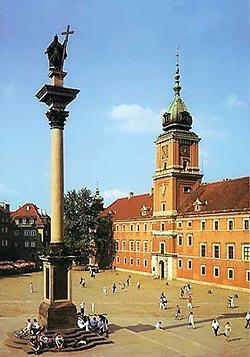
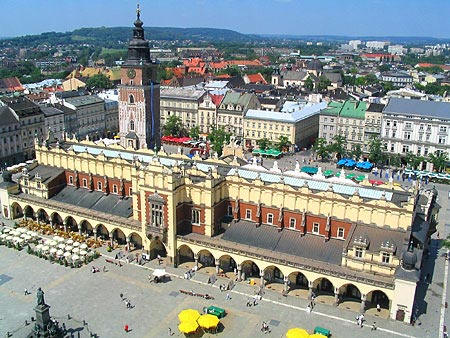
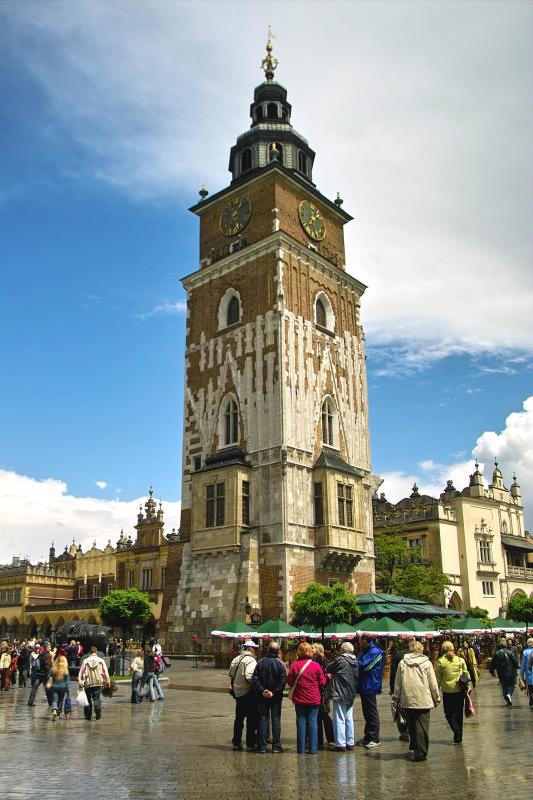
Days 14-16 Prague
Your leader will collect the remainder of your local payment (EUR200
cash per person) today. After the overnight train journey, we find
ourselves in Prague, the 'city of a hundred spires'. Having been the
residence of rulers and archbishops for over a thousand years it has
been left with a unique gallery of historic buildings. A walk
through the old town is the best way to get a glimpse of this
magnificent city. Prague is a large city however the main sights are
all located within walking distance. The efficient metro can help
you on the longer stretches. Spend time at the 9th century Prague
Castle, the largest ancient castle in the world, where you will find
the famous St Vitus' Cathedral and pastel colored Golden Lane. The
panorama from up here is the best you'll get. Stroll along Charles
Bridge and look at the local artists' offerings and stop to enjoy
the buckers, shop for Bohemian crystal and garnets or climb one of
the many towers for great views. The main square boasts the
Astronomical clock which does it's dance every hour and the 'Romeo
and Juliet' Church of Our Lady of Tyn. The old town at night is
truly special and not only for the floodlit sights. There are some
great restaurants and pubs, many in old vaulted cellars- the perfect
place to have a cozy meal.
Day 17 Cesky Krumlov
We depart Prague on an early morning bus on day 17 to the South
Bohemian town of Cesky Krumlov (Che-skee Krum-lov) (approx. 3.5
hours). This picturesque medieval town, one of Europe's most
beautiful, dates back to the 13th Century and is straight out of a
fairytale. The name means 'Crooked meadow' and nestled in the bend
of the Vltava River it comes complete with a castle on a hill
towering over a quaint old town, which boasts a collection of
beautiful old buildings and a confusion of cobbled alleyways. There
are several small museums and local galleries to explore, otherwise
you can tour the castle to see the fabulous Masquerade Hall, or
climb the tower to watch over the town. You can choose the option to
spend the afternoon cycling across the rolling hills of the
countryside enjoying the scenery highlighted by the Vltava River.
Weather and time permitting there is the option of a relaxing 2 to 3
hour raft/canoe trip on the river that winds right through the
centre of Cesky Krumlov, a favorites summer pastime here. If a
rafting trip isn't really your speed, there's always the optional
audio-guided walking tour of Cesky Krumlov to illustrate the magic
and mysteries that lie behind every shop front and house on the
crooked little streets. Finally, a visit to the Cesky Krumlov
brewery (there are tours in English) will give you an overview of
the brewing tradition that has existed here in town for hundreds of
years. There are plenty of options here and great places after
sundown to relax.

Days 18-19 Vienna
We travel by two trains (approx. 6 hours) to elegant and musical
Vienna on day 18. Vienna was once the centre of the Habsburg empire
and today it is a cosmopolitan city which still retains the grandeur
of that golden age. Art lovers have a vast choice of museums, from
the Albertina to those located in the Museums Quarter, the Leopold
Museum, Kunsthalle Wien and the Museum of Modern Art. Those with an
interest in 19th and 20th Century Austrian art should visit the
Belvedere Palace to see Gustav Klimnt's famous painting 'The
Kiss'.One idea might be to continue your Habsburg education and
visit the Hofburg in the morning, the imposing winter palace of the
Habsburg's. Then head out to Schonbrunn in the afternoon, the summer
palace designed by Empress Maria Theresa herself, for a guided audio
tour. The palace gardens are free for all visitors. After the tour,
you had better not miss the views over Vienna from the Gloriette
Monument - it rivals St. Stephen's for best views of the city. You
can book your tickets in advance to avoid the long queues on this
website -You might want to climb the 343 steps of the tower of St. Stephen's
Cathedral, or take a spin on the famous Prater Ferris Wheel. After
all this sightseeing it's time for that great Viennese institution,
coffee and sacher tort. Perhaps finish off the evening by listening
to Mozart, Bach or Schubert at the Opera.
Days 20-21 Budapest
Traveling from Vienna by train (approx. 3 hours) on day 20, we
arrive in Budapest with time to explore 'the Pearl of the Danube'.
There is plenty to see and do and the best way to see it all is by a
bicycle trip through the city. You have the option to spend the
afternoon peddling past the sights. Since the Communist system
collapsed in Hungary, Budapest has experienced a renaissance. The
grand architecture and boulevards are an outdoor museum of history,
whilst glamorous stores and glitzy restaurants make this one of the
truly great cities of Europe. Budapest is the perfect city to enjoy
from the water. From here you'll see the magnificent buildings that
line the banks of the Danube River and the bridges linking Buda to
Pest. Take one of the tourist boat trips to see the sights or cross
the Chain Bridge for a spectacular view of the Parliament Building
and the Castle District. Be sure to head down to the river after
dark to enjoy the floodlit spectacle. For art or history buffs,
Budapest has many museums to occupy you for at least a few days. If
you have time, head out to Statue park to see all the communist
monuments that were removed from the city streets after the fall of
the Iron Curtain. Perhaps take in a some of the rich folk culture
with a music and dance performance or some opera and ballet. A must
in Budapest is a soak in the hot thermal baths. There are several
around the city centre ranging from the sumptuous and elegant to the
simple outdoor types. There are pools of varying degrees, some with
whirlpools, chess boards and seats - where you can enjoy it all
while curing in the therapeutic waters.
Days 22-23 Bled
On day 22, we travel to Bled (approx. 11 hours), situated on the
stunning Lake Bled on the edge of the Julian Alps. From Bled the
outdoor options are many - we can go rafting, caving, canoeing,
swimming (all seasonal and optional) or you might like to hire a
bicycle and head out to Vintgar Gorge (4 km) and walk through this
natural canyon. You can see the castle atop the 100 meters cliff
overlooking the lake, catch a plenty (small wooden boat) over to the
island in the middle of the lake to ring the wishing bell or join
one of the more adventurous activities. Walk, cycle or rollerblade
the 6 km around the lake or just admire the panorama that has made
Bled famous for its scenery.You can take the option for a day trip
to Lake Bohinj in a glaciated valley in the Julian Alps to ascend
Mount Vogel by cable car for awesome views of the ranges. If the
weather is clear you can even see Triglav, the highest peak in the
Julian Alps of Slovenia. Please note that the weather conditions on
top of Mt. Vogel vary greatly (it is a ski resort in the winter).
For dessert you must try a piece of Bled cake, a vanilla, custard,
cream and pastry delight that is sold in its finest form in Bled.
 Days 24-25 Venice Days 24-25 Venice
On day 24 we journey (approx. 3.5 hours) to one of the most unique
cities of the world - Venice. Probably no other city in the world
paints a picture in one's mind like Venice. There are only two ways
to get around Venice, by boat or on foot. We start day 24 with a
leisurely walking trip lead by your Group Leader that passes all the
major sights of this most historic and picturesque city - the Grand
Canal, the old-world shops of the Rialto Bridge, the Palace of the
Doge (ruler of Venice), the Piazza and Basilica of San Marco and the
wonderfully romantic Bridge of Sighs. There's also time for you to
wander the narrow, cobblestone streets and spacious piazzas and
cross the hundreds of tiny bridges with shops, markets, galleries,
churches and stunning buildings around every corner.
Days 26-28 Lucca
For the next three days we focus on the contrasts of Tuscany. On day
26 we catch a train to Lucca (approx. 5 hours), our base for 3
nights. From the gorgeous rolling hills, farmlands and vineyards
dotted with ancient Roman ruins and opulent villas, to the medieval
hilltop towns with charming squares and cobblestone streets, there
is plenty to keep you occupied. Take in the magnificent artistry and
historic grandeur of the cities of the Romanesque and Renaissance
period, which are still alive with everything that is modern, from
fashion to the buzz of fabulous sun-drenched sidewalk cafes. In your
free time, why not set off for a cycle tour around the Tuscan
countryside, along a scenic river. There is also time to explore
Lucca itself, with its centuries-old buildings, beautiful churches
and charming piazzas, you can even ride along the top of the city
walls! We take a day trip into Florence (approx. 1.5 hours), so you
can explore the sights of this beautiful 'outdoor museum' of a city:
the Pitti palace, the Ponte Vecchio, the Arno River front, the many
statues and monuments of the Piazza della Signoria, the Vecchio
Palace, the 13th Century Duomo, Baptistery and Bell tower, and the
Santa Croce Church. The minds and talents of the Medici's, Leonardo
de Vinci, Raphael, Machiavelli, Donatello and Michelangelo all
flourished in Florence, to name but a few. There will be plenty of
free time to take in the many fine museums and art treasures such as
the Medici Chapels, as well as time to shop in the markets and in
the chic boutiques. Another travelers' favorite is Pisa, famous for
its Leaning Tower. It is only a short ride from Lucca (approx. 30
mins). To accommodate our passengers in Lucca, we have several
separate apartments located near the centre therefore you may be a
short walk away from your other group members who are staying in
apartments located in another corner of Lucca. It is an approx. 20
min walk from the train station to our main apartment in Lucca.
Should you wish to organise a taxi for yourself or your luggage you
leader will be more than happy to assist in arranging this for you
at your expense.
 Days 29-30 Nice Days 29-30 Nice
Known as the star of the Riviera, and rightly so, it is also a great
base from which to explore the rest of the Cote d'Azur. On day 29 we
travel by train (approx. 8 hours) to Nice. With both public and
private beaches, and water sports available (though they can be a
bit pricey), this is where the locals and the stars take holidays.
You may want to spend a day mixing with the high society in Monaco,
St Tropez or Cannes. On the cultural side, a museum pass is
available which includes free admission to a variety of the
Riveria's museums. In Nice itself you'll find a museum dedicated to
artists, Gallo-Roman ruins next door to the standard archaeological
museum, and a very good modern art museum. If you happen to be
traveling in July or September, you can look forward to the annual
Jazz and Vineyard festivals.
 Days 31-32 Avignon Days 31-32 Avignon
On day 31 we travel to Avignon by bus (approx. 4.5 hours) and have
plenty of time to explore this town and others in the Provence
region of France. The huge Palace of the Popes, 'the biggest and
most beautiful house in the world' is the highlight. The palace was
the residence of the Sovereign Pontiffs during the 14th Century and
is the biggest Gothic Palace in the world. Pont St-Benezet, made
famous by the nursery rhyme, built during the 12th century was the
only crossing point along the Rhone River, the natural boundary
between the Kingdom of France and the Holy Roman Germanic Empire.
Most of the bridge was swept away by floods in the seventeenth
century, and today only 4 of the original twenty-two arches remain.
From the Pont St-Benezet to the Palace of the Popes, you'll be able
to see how heralded this city once was. For aspiring artists there
is the Small Palace Museum, the Lamber Collection, the Angladon
Museum and the Lapidaire. The best option is to take a bike and
cycle north of Avignon, if you are up to it you can make it all the
way to Orange (40 km and mostly flat). A combination of cycle paths
and roadways wind their way to Chateauneuf-du-Papes. The name means
'the Pope's new castle', as back in the 14th Century the Pope was
said to have a penchant for wine, and his successor, John the 22nd,
built a castle in 1316. After the Wars of Religion (1562-93) between
the Catholics and Protestants, all that remained of the papal
fortress were a few fragments of walls and tower, but the ruins look
spectacular and offer magnificent views across to Avignon and the
Vaucluse uplands beyond.
 Days 33-34 Paris Days 33-34 Paris
Traveling to Paris on day 33, by train (approx. 3.5 hours), we
finish off our trip in style, perhaps trying out a few different
cafes and catching some of the sites that make up the famous Paris
skyline. We celebrate our journey to Paris with a farewell dinner.
Paris is the city of lights and lovers and the sights are iconic
including the Arc de Triomphe - built by Napoleon to celebrate
various military triumphs, the Champs-Elysees - Paris' grandest
avenue and the Notre-Dame Cathedral - a stunning example of gothic
architecture that took two centuries and armies of medieval workers
to complete. The afternoon is free, and the options for filling it
are almost endless. The world famous Musée d'Orsay and Musee du
Louvre are just two suggestions, or simply enjoy strolling the
streets of Paris to take in the magic of this breathtakingly
beautiful city. There is so much to do so don't waste a minute! You
are free to leave any time on day 34 as there are no activities
planned.
Take
on the European heartland on this mammoth overland odyssey. This is
our most comprehensive trip in Europe, traveling from medieval town
squares to cosmopolitan cities, experiencing a wealth of history
along the way. We'll cycle through Tuscany, hike alpine landscapes,
walk in the footsteps of royalty and rulers and try the local
specialties that make Europe legendary. Explore both the famous
icons and off the beaten track places that are just waking up to the
modern world, on this all-encompassing voyage through Europe.
- Tour leader
throughout.
- Local bus, train, metro, minibus,
overnight train, walking
- Paris
- Bruges
- Amsterdam
- Berlin
- Warsaw
- Krakow
- Prague
- Bohemian countryside
- Cesky Krumlov
- castles
- Budapest
- Bled
- Venice
- Tuscan towns
- Riviera beaches
- Avignon
- Provence
Call or
e-mail us for more
information, or to speak to a guide about this trip.

|
|








